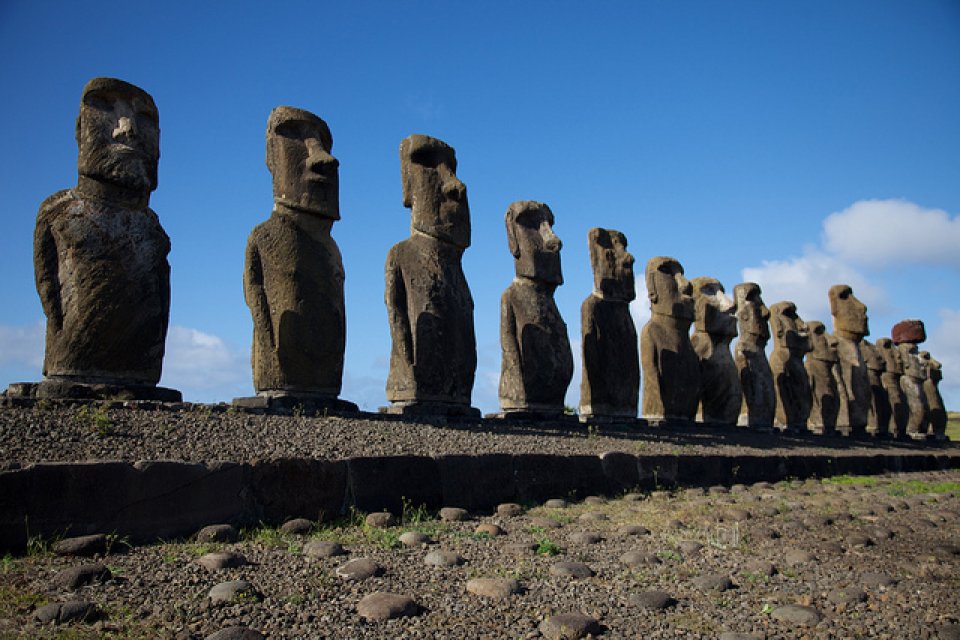Dive in Easter Island
Diving in Easter Island
The main attraction for divers is Easter Island, which lies 2,300 miles offshore. The island rests on a broad submarine volcanic ridge that supports 144 species of algae and 111 species of tropical and pelagic fish. Six species of corals grow in shallow water around the island, though there are no coral reefs.
About one-fifth of all marine flora and fauna is endemic. Visibility in these cobalt seas can exceed 120 feet. Undercurrent readers seem to agree that Easter Island offers a unique, if limited, dive experience. Except for a few spectacular sites in the Motu Nui Islets off the island's southwest shore, fish life is sparse and corals are drab. Local operators keep the diving safe for beginners, and combine two-tank morning dives with afternoon archeological excursions to see the island's famed stone statues, known as moai, plus other historic sights. The best site in the area is Rapa Nui.
Easter Island’s subtropical water temperatures average 70°F, with the warmest waters (72°F) from September into February. Air temperatures range from highs of 68°F in summer months to 79°F in winter. Conditions make for easy diving in the winter, but rough waters can limit choices of dive sites in summer.
Travel to Easter Island
Easter Island is just about as remote as you can get on Planet Earth. Officially it belongs to Chile, and lies about halfway between Chile and Tahiti. Once the home of a flourishing and sophisticated civilization, by the time it was discovered by a Dutch party of explorers on Easter Sunday in 1722, it was a subsistence economy with only a few hundred residents.
Easter Island is mostly famous for the giant stone heads, or Moai, which are said to depict ancestors, and of which there are hundreds – showing how important they once were in the past cultural life of the islanders.
Because it is so remote, many travelers think it must be difficult to reach, but in fact it is well served by flights from Lima (Peru), Santiago (Chile) and Tahiti. Flights from Lima run twice a week, and from Santiago they are daily, but between $300 and $400 each way. If you happen to be in Asia or Australia, a slightly cheaper option would be to make Papeete a stopover on an Air New Zealand flight Aukland to South America, where you can connect with LAN Air’s Papeete/Easter Island/Santiago route.
Hotels are not cheap either – minimum $80 a night but there are many guesthouses where you can pay as little as $20, and as Tourism is the main industry, you get pretty well looked after.
Don’t miss a visit to the quarry at Rano Raraku, where most of the Moai were carved, and if visiting Moai sites, which are mostly around the coast, be aware that most of the stone heads are on burial sites (called Ahu) – please treat them with respect.
There are plenty of restaurants, but anything except fish is likely to be very expensive. However the fish is abundant and very good value. Few places on the island take payments by credit card, and if they do will probably impose a hefty surcharge. There are ATMs if you need to top up your cash supply. You can get a substantial meal for $20 in many places.
The local drink is Pisco – strong and made from fermented grapes. It mixes well with lemon juice (a Pisco Sour) or with coke.
There may be plenty of people visiting Easter Island every year, but the world is a big place, and you are unlikely to meet many others who have made the effort to get to this little speck of rock surrounded by a huge ocean.
(By Angela Webster)

